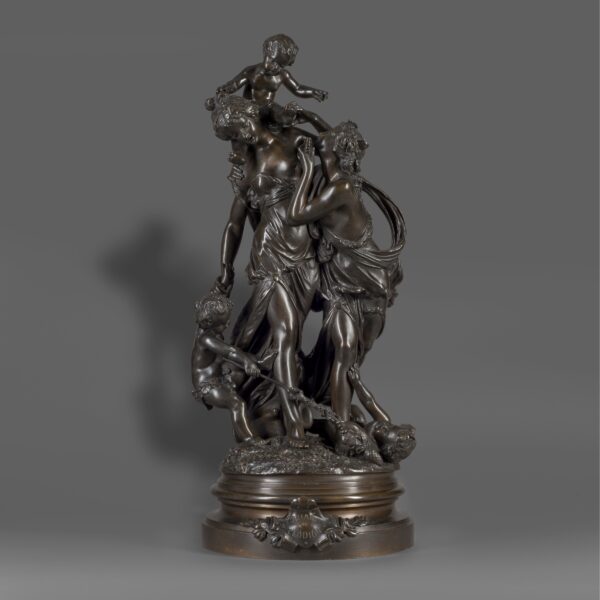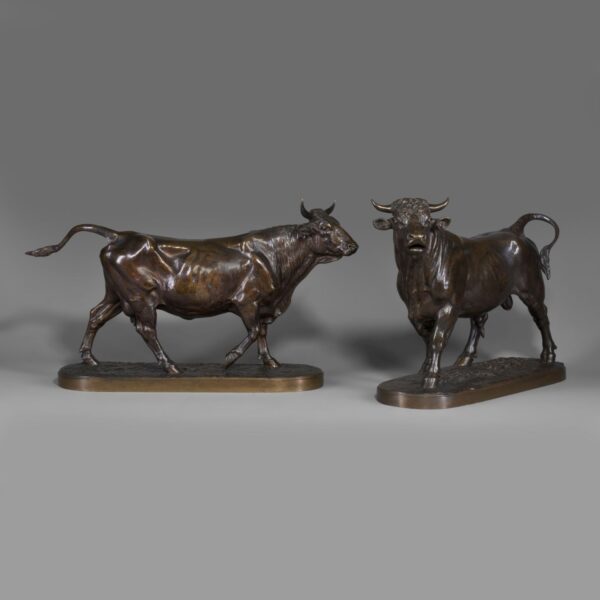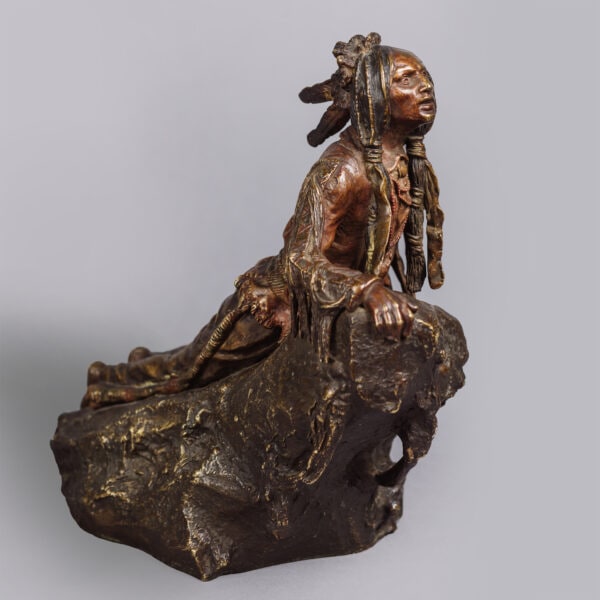Elkington & Co.
The Warwick Cup – An Important Victorian Silver Presentation Horse Racing Trophy
£150,000
The Warwick Cup - An Important Victorian Silver Presentation Horse Racing Trophy For The 1853 Warwick Races, By Elkington & Co. England. Modelled by...
Размеры
Height: 75 cm (30 in)Width: 56 cm (23 in)
Depth: 38 cm (15 in)
Описание
The Warwick Cup – An Important Victorian Silver Presentation Horse Racing Trophy For The 1853 Warwick Races, By Elkington & Co. England. Modelled by Pierre-Emile Jeannest (French, 1813 – 1857).
Depicting Queen Henrietta Maria & Prince Rupert of the Rhine At Edge Hill. On a Cornish Sepertine pedestal base set with silver armorial plaques.
Signed ‘Executed by Elkington, Mason and Company 1852-1853’. Further hallmarked on foot, cape, and base.
Weight of weighable silver 357 oz. 18 dwt. (11,232 gr.)
Birmingham, England, Circa 1852-1853.
This large and exceptional silver sculpture depicts a finely modelled figure of Queen Henrietta Maria (1609-1669), who was Queen of England, Scotland and Ireland from her marriage to King Charles I on 13 June 1625, until Charles was executed on 30 January 1649. Queen Henrietta-Maria is shown in full dress chased with fleur-de-lys and adorned with jewels, mounted on a horse draped with a latticed blanket. The male figure bowing at her side, his hat resting on the ground, is Prince Rupert of the Rhine (1619-1682). The group is raised on a red Cornish serpentine marble plinth applied with four silver panels depicting medallions of King Charles I and Queen Henrietta-Maria, between the Royal arms of England, the ends embellished with the arms of Prince Rupert of the Rhine.
Superbly modelled by the French émigré sculptor Pierre-Emile Jeannest (French,1813 -1857), the group is depicted as an historical ‘tableau vivant’ of the historical meeting during the English Civil War of Queen Henrietta Maria and Prince Rupert at Edge Hill. Conceived in the chivalric French troubadour style, adapted to the English taste, the group exemplifies the mid-19th century obsession with romantic historicism, as popularised by Sir Walter Scott, and the influence on Jeannest of his teacher, the famed artist Paul Delaroche (French, 1797 – 1856).
Jeannest’s artistic innovation was to translate the dramatic and highly finished style of Delaroche’s history paintings into three-dimensional form. The tense muscularity of the horse with its dramatic flared nostrils and startled openmouthed expression, like a bronze study by Mêne or Barye, contrasting with the dispassionate knowing gaze of Queen Henrietta, as she looks upon the devoted Prince genuflecting to his warrior queen.
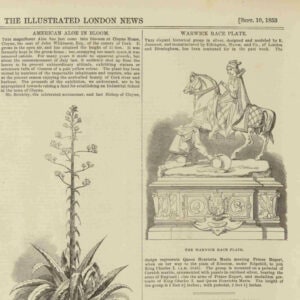
The Illustrated London News, 10 September 1853, p. 16.
From 1851-56, Elkington was commissioned annually to make a series of sculptures as presentation pieces for the Warwick Race Committee, all of which were modelled by Pierre-Emile Jeannest. Drawn from the rich history of the county of Warwickshire, the series included ‘Queen Elizabeth Entering Knebworth Castle, A.D. 1575’, and two scenes, depicting the first pitched-battle of the Civil War in 1642: ‘Charles 1st At Edge Hill’, and the present group ‘Queen Henrietta Maria and Prince Rupert At Edge Hill’.
The Art-Journal of October 1856 acclaimed Jeannest’s History of Warwickshire series, comparing them to Elkington’s famous Iliad Salver:
“The Iliad Salver, although it is the latest, and perhaps the best, of the numerous salvers produced by Messrs. Elkington,is certainly not the only work of the kind which will interest the visitor: there are many others in the Court that will well repay close inspection; so too will the large collection of shields, vases, dishes, candelabra, statuettes, and bronzes of infinite variety, and for useful and ornamental purposes. We would particularly direct attention to the bronze groups, illustrative of Warwickshire History.”
On Saturday 21st February, just a fortnight after Jeannest died, the Society of Arts held its first Conversazione of the 1857 season. Elkington contributed twenty-four art works, eleven of which were by Jeannest, in what was seen by many as a mini retrospective. On the Warwick History series, Jeannest’s specialty showpieces, The Journal of the Society of Arts wrote:
“The above three groups are from portions of the history of Warwickshire; and the full-sized groups were made expressly as prizes for the Warwick races, for which several other pieces have been produced by this firm, from models by ‘Jeannest.”
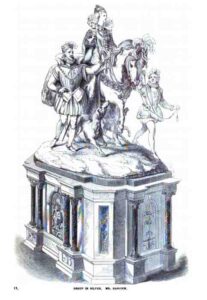
‘Elizabeth I Arriving At Kenilworth Castle’. The first of Elkington’s Warwick History series of sculptures
The figure of ‘Elizabeth I Arriving At Kenilworth Castle’ the first in the series, was shown at the Great Exhibition of 1851 and was the first work that Elkington commissioned from Jeannest, before employing him full-time two years later. It was highly praised by the Jury and no doubt contributed to him securing a full-time position.
“The Jury have particularly noticed, among the works of Messrs. Elkington and Mason, the beautiful group entirely of cast silver representing Queen Elizabeth on horseback between a gentleman in waiting and a page, after a model executed by M. Jeannest, a French artist. This group is, in the opinion of the Jury, a very choice work of art…”
Whilst at Mintons, Jeannest had designed the “Victoria” pattern dessert-service that Queen Victoria acquired at the 1851 exhibition, and after his appointment at Elkington, Jeannest became a favourite Royal artist.
Victoria and Albert purchased several important works designed by him for Elkington, including a set of twelve candelabra for their new private residence at Balmoral, and the spectacular equestrian silver statue from the Warwick History series, of ‘Lady Godiva’, purchased by Queen Victoria, and given as a birthday gift to Prince Albert in 1857.
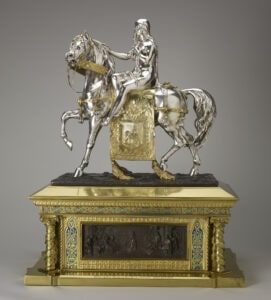
‘Lady Godiva’ 1857-58 – An equestrian sculpture from the Warwick History series, modelled by Pierre-Emile Jeannest for Elkington & Co. Purchased by Queen Victoria and given to Prince Albert as a birthday gift in 1857. Royal Collection -RCIN 1571.
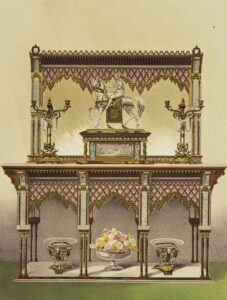
The figure of ‘Lady Godiva’ ehibited on Elkington’s stand in 1862. J.B. Waring, Masterpieces of industrial art & sculpture at the International Exhibition, 1862
The present group of ‘Queen Henrietta Maria and Prince Rupert at Edge Hill’, was inspired by the famous contemporary portraits of the Queen by artists such as van Dyck and the engravings of Jérôme David (Hieronymus David), showing the Queen on horseback.
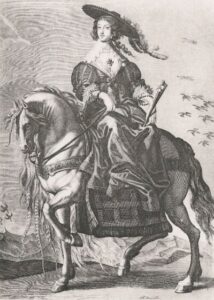
Henrietta Maria after Jérôme David (Hieronymus David) photogravure, published 1902 (circa 1625-1650) National Portriat Gallery – NPG D4268
The Great Exhibition had created an insatiable enthusiasm for design, but it was the Paris Exposition universelle of 1855 that transformed British design in the late-1850s with a more sophisticated sense of French subtlety and grace, virtues which Elkington capitalised on by the employment of designers such as Jeannest, Willms, and MorelLadeui. Before his untimely death, aged forty-four on 7th February 1857, Jeannest had transformed Elkington’s creative reputation.
His friend, George Wallis, whose tenure as Headmaster of the Government School of Art at Birmingham coincided with Jeannest’s employment by Elkington, wrote his obituary in The Art-Journal, which stressed the key role he played in raising Elkington’s reputation:
“The Jury have particularly noticed, among the works of Messrs. Elkington and Mason, the beautiful group entirely of cast silver representing Queen Elizabeth on horseback between a gentleman in waiting and a page, after a model executed by M. Jeannest, a French artist. This group is, in the opinion of the Jury, a very choice work of art…”
Jeannest’s History of Warwickshire series were, in the 1850s, what Wallis unaffectedly termed “the more important productions of the eminent house,” and were the first masterpieces of the art of electro-metallurgy.
A supreme example of Elkington’s craftsmanship, the sculpture depicts the meeting of Queen Henrietta Maria (1609-1669) and Prince Rupert of the Rhine (1619-1682), the great Civil War military commander and nephew of King Charles I, before the important battle of Edge HIll.
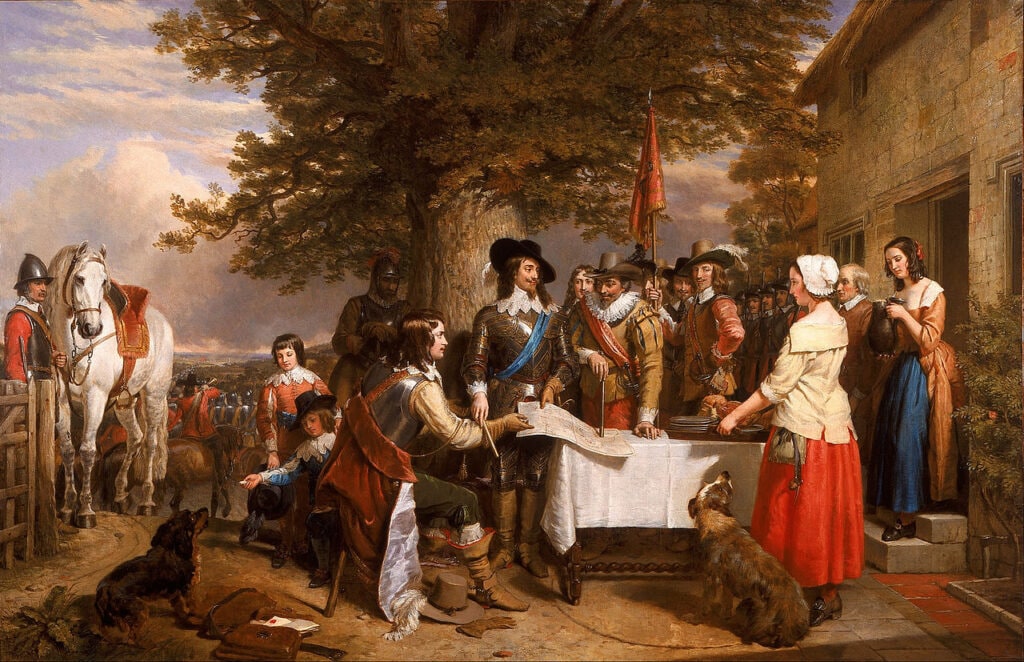
Eve of the Battle of Edge Hill, 1642 by Charles Landseer (1799–1879), 1845. Walker Art Gallery, Liverpool
The meeting was notable for its historical significance and the impact that both individuals had on the course of the English Civil War. Prince Rupert’s military skill and leadership were critical to the Royalist cause, while Queen Henrietta Maria’s political and diplomatic efforts helped to garner support for her husband’s reign.
Despite their success on the battlefield, the Royalist cause was ultimately defeated in the English Civil War. Prince Rupert eventually went into exile on the Continent, where he continued to serve in various military capacities. Queen Henrietta Maria also spent time in exile, living in France after her husband’s execution in 1649.
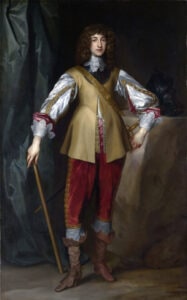
Anthony van Dyck – Prince Rupert of the Rhine. [Public domain], via Wikimedia Commons
At the outbreak of the war Queen Henrietta Maria was at The Hague raising funds for the Royalist army. Following a very rough crossing from the Netherlands she was travelling through England to be reunited with the King. They spent the latter part of 1643 together in Oxford, with the Queen living in the Warden’s Lodgings of Merton College.
By March 1644, following a defeat at Alresford, Hampshire, Oxford was deemed to be at risk. The Queen left the city for Bath with the King travelling with her as far as Abingdon. It was the last time they would see each other. Henrietta Maria left England for France via Falmouth on 14 July. The King returned to Oxford with his sons. He continued to fight until 1648 when he was captured and executed the following year.
Henrietta Maria stayed in France under the protection of her family and returned to London after the restoration of her son King Charles II as monarch in 1660, but the damp climate of London caused her to travel to France in 1665 where she remained until her death in 1669. She was buried in the Royal vault of St. Denis, Paris, however, her heart was placed in a silver casket and buried at the convent she founded in Chaillot.
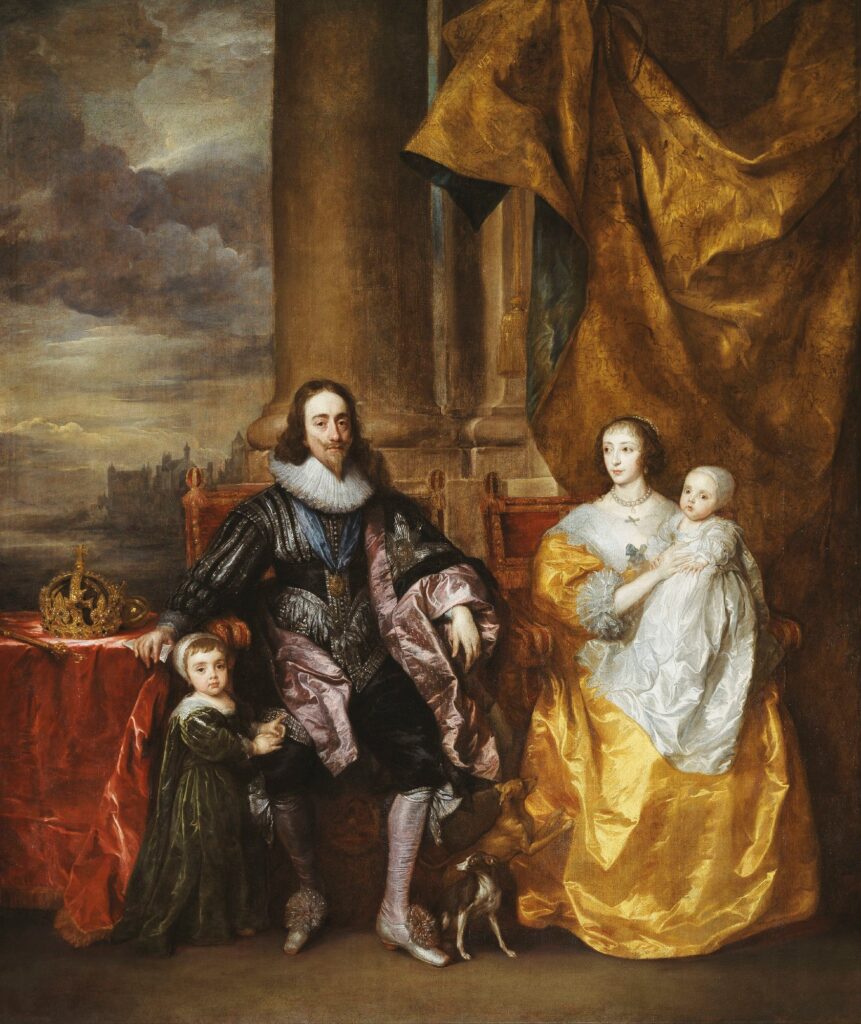
Anthony van Dyck (1599-1641) – Charles I and Henrietta Maria with their two eldest children, Prince Charles and Princess Mary, April-August 1632. Royal Collection – RCIN 405353
Pierre-Emile Jeannest (1813 – 1857)
The designer and figure-modeller, Pierre-Emile Jeannest (1813-1857) was the son of the French bronzier Louis-François Jeannest (1751-1856) and pupil of the artist Paul Delaroche, professor at the École Nationale Supérieure des Beaux-Arts.
Shortly after turning thirty following the death of his early patron the Duc d’Orléans, the eldest son of Louis-Philippe, he moved to London to seek his fortune. After two years in London mostly spent teaching, he moved to Stoke-On-Trent taking up a position at Minton & Co. where he was employed as a figure modeller, producing designs for majolica, terracotta, parian and porcelain. Whilst at Mintons, Jeannest designed the “Victoria” pattern dessert-service that Queen Victoria acquired at the 1851 Great Exhibition.
Jeannest continued to make occasional designs for Minton after he left to work full time for Elkington in 1853. On 29th September 1853, Jeannest was appointed to “undertake the entire management, care and direction of all French work people” employed by Elkington & Co. His initial term of service was for 4¼ years, at a salary of £450 per annum. This was later adjusted to 5 years at £500 per annum, a considerable annual salary, almost twice that of contemporary doctors and clergy.
A favourite artist of queen Victoria and Prince Albert, they purchased several important works by him, including a set of twelve three-branched candelabra for Balmoral jointly designed by Prince Albert, and the spectacular equestrian silver statue of Lady Godiva, part of the Warwick History series, the second cast of which Queen Victoria gave as a birthday gift to Prince Albert in 1857.
Pierre-Emile Jeannest died at the age of forty-four on 7th February 1857. His work and legacy having transformed Elkington’s reputation.
Дата
Circa 1852-53
Происхождение
Англия
Средний
Silver
Подпись
Signed 'Executed by Elkington, Mason and Company 1852-1853'. Further hallmarked on foot, cape, and base.
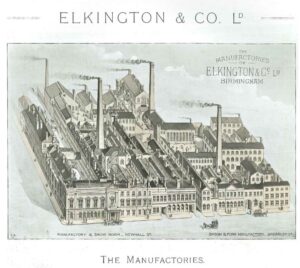
Founded in Birmingham in the 1830s by George Richard Elkington (1801-65) and his cousin Henry Elkington (1810-52), Elkington & Co became the largest and most successful silversmithing business in England in the 19th century, supplying the top end of the domestic market as well as the emerging hotel and travel trade. With the capital from other business partners, George and Henry Elkington exploited the development of the new manufacturing processes of electroplating (silver deposited on a base metal by the action of an electric current), electrogilding (gilding by use of electricity) and electrotyping (a form of electronic casting to form the whole object). By marketing electroplate as a cheaper substitute for silver and by selling the patents for all the new techniques, the Elkingtons revolutionised the silver and plating trades all over the world.
As a result of its excellence in artistic quality and fine design Elkington & Co. received the highest possible awards at all the Great International Exhibitions. Their stand at the 1851 Great Exhibition was highlighted for particular mention in the catalogue of the Exhibition, in which it is stated that,
“‘The Stall of Messrs. Elkington is another justification of our adhering to what is beautiful for its own sake, independent of all other considerations; the reproduction of Pompeian and other ancient forms in this stall, … old as they are, strike the eye with an extraordinary degree of freshness..”
The company was also awarded the Legion d’Honneur of the French Republic and the distinction and honour of holding Royal Warrants to Queen Victoria, King Edward VII, Queen Alexandra, King George V, Queen Mary and King George VI, as well as the Duke of Windsor (formerly King Edward VIII) and H.R.H. the late Princess Christian and their late majesties the King of Spain and King of Italy.
By the 1860s, Elkington & Co employed about one thousand workers at their factory in Birmingham. It was directed after 1865 by Frederick Elkington, one of George’s two sons who had entered the family business in the 1850s. The company prospered from the sale of plated goods while continuing to produce the sterling silver and objects of cloisonné and champlevé enamel work for which it was always highly respected.
Because other British firms had ceased to make silver presentation pieces to exhibit at international exhibitions, only the Elkington firm represented the art of British silversmithing in Philadelphia at the 1876 Centennial Exhibition or in Paris at the 1878 Exposition Universelle.
The company sought out distinguished artists from abroad to create exhibition masterpieces for them to enhance their prestige in the commercial sector. The choice of Renaissance and classical forms, often with repoussé embellishment, that dominated Elkington’s silver production was to some extent dictated by the firm’s French designers, including Pierre-Emile Jeannest (1813-57), who joined Elkington about 1849, Léonard Morel-Ladeuil (1820-88), hired in 1859, and Albert Willms (active before 1848-about 1900), head of the design department from the 1860s until the end of the century.
Works by Elkington & Co can be found in the Royal Collection, London, Victoria and Albert Museum, London, and the Metropolitan Museum of Art, New York.
Commissioned from Elkington and Co. by the Warwick Race Committee, 1853. Run for at Warwick Races on Wednesday, 8 September 1853, won by Mr Barber’s 3 year old horse ‘Goorkah’.
The Illustrated London News, ‘Warwick Race Plate’, 10 September 1853, p. 16, column 3, illustrated.
Atterbury and Batkin ‘Dictionary of Minton’ (1990), p. 279.
A Century of Art Education in the Potteries. With notes on the Artists, 1953 Local Studies, 1953 (Circa) p. 6 and p. 44.
‘Pierre-Emile Jeannest’, Mapping the Practice and Profession of Sculpture in Britain and Ireland 1851-1951, University of Glasgow History of Art and HATII, online database 2011 [http://sculpture.gla.ac.uk/view/person.php?id=msib4_1219250614, accessed 12 May 2023]
The Illustrated London News, ‘Warwick Race Plate’, 10 September 1853, p. 16, column 3, illustrated.
Alistair Grant, ‘Elkington & Co. and the Art of Electro-Metallurgy, circa 1840-1900’.
Thesis, University of Sussex, September 2014.
The Art-Journal, Wallis, George, “Obituary. M. Emile Jeannest,” 1st July 1857, New Series, Volume III, James S. Virtue, London, 1857.
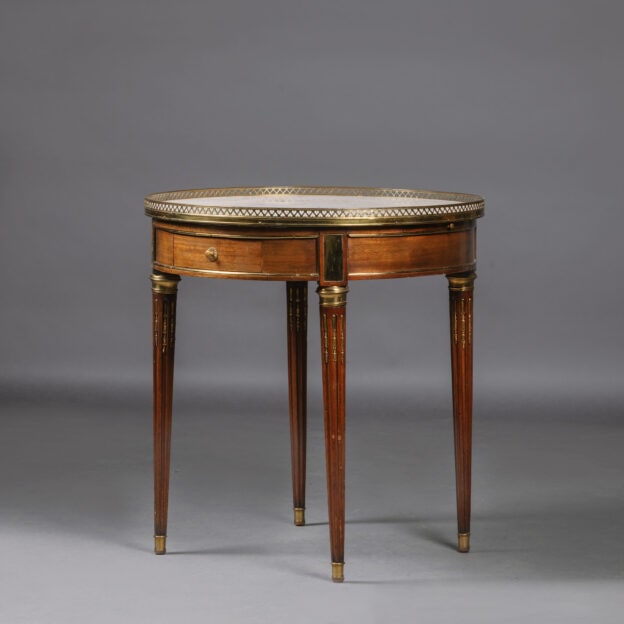




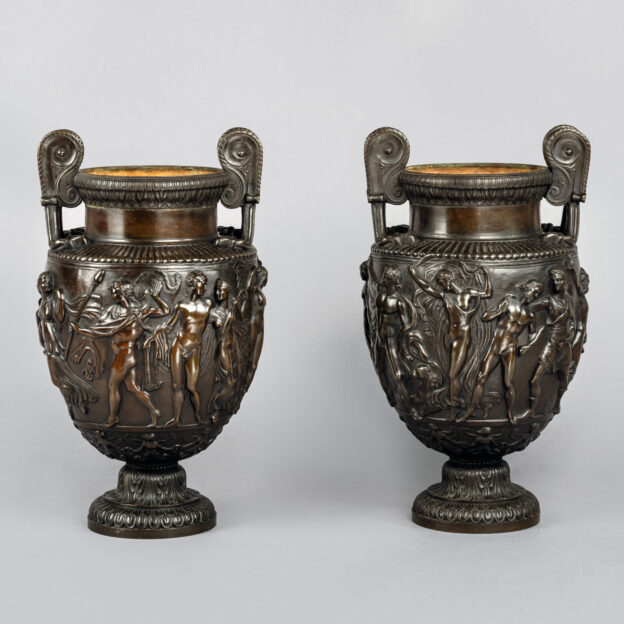
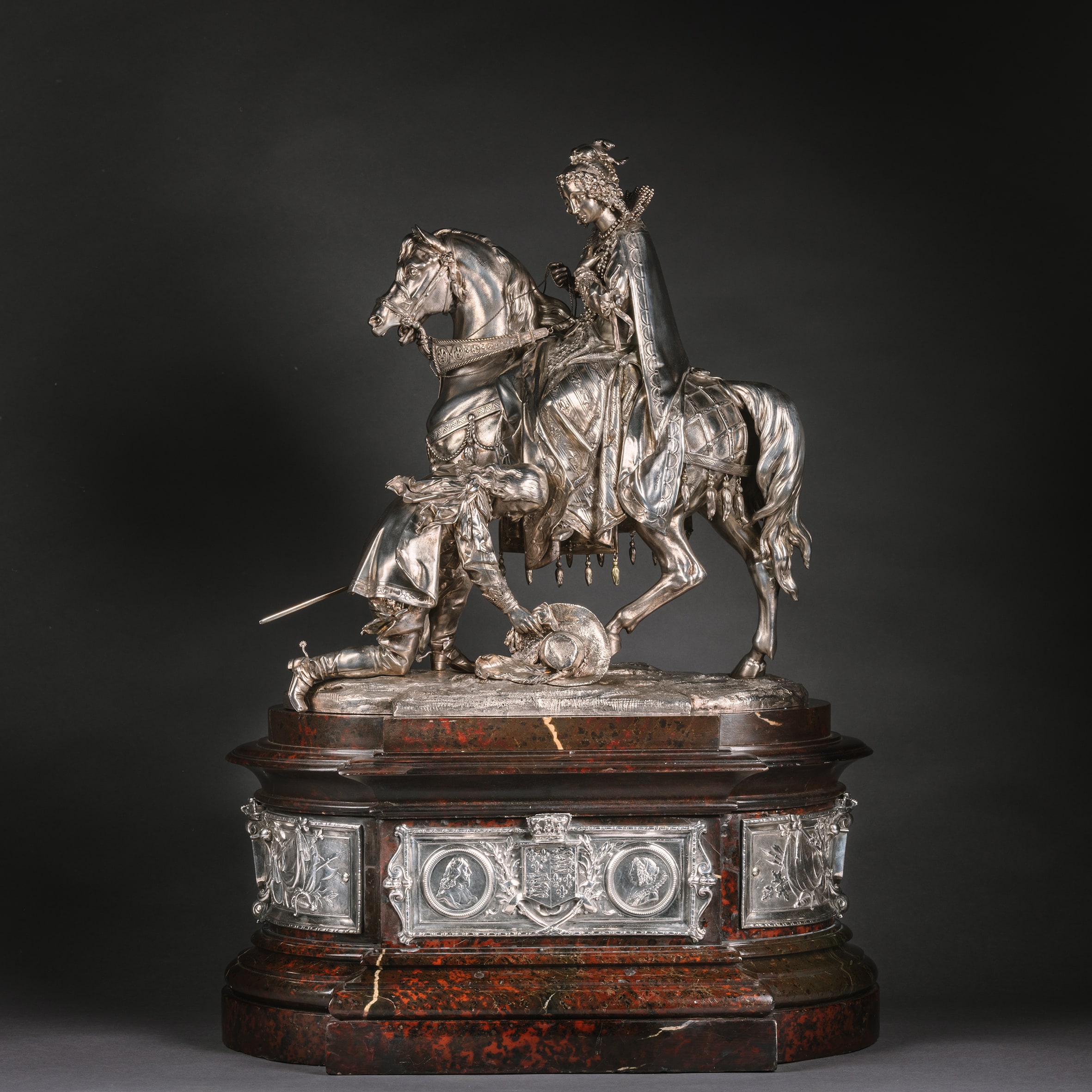
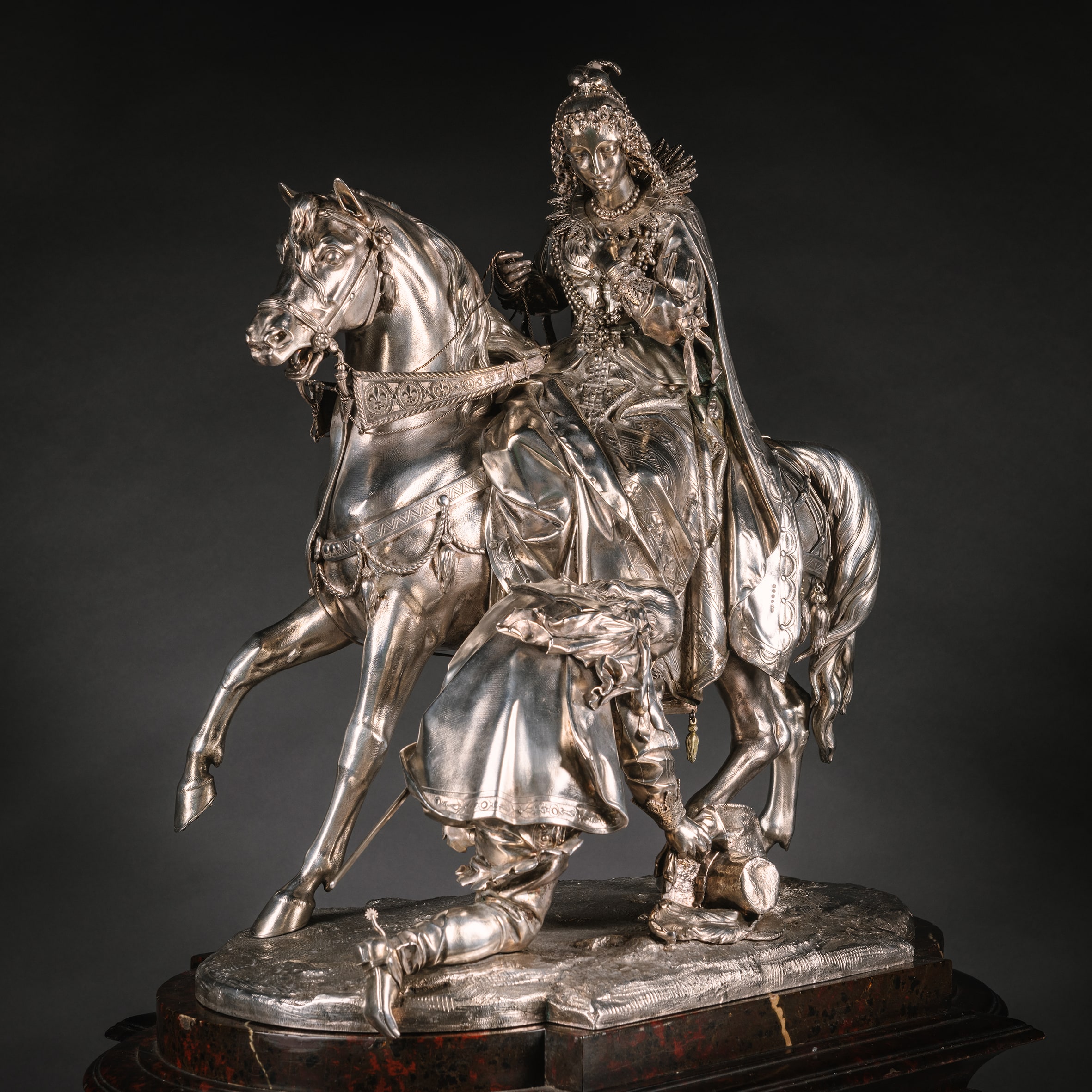
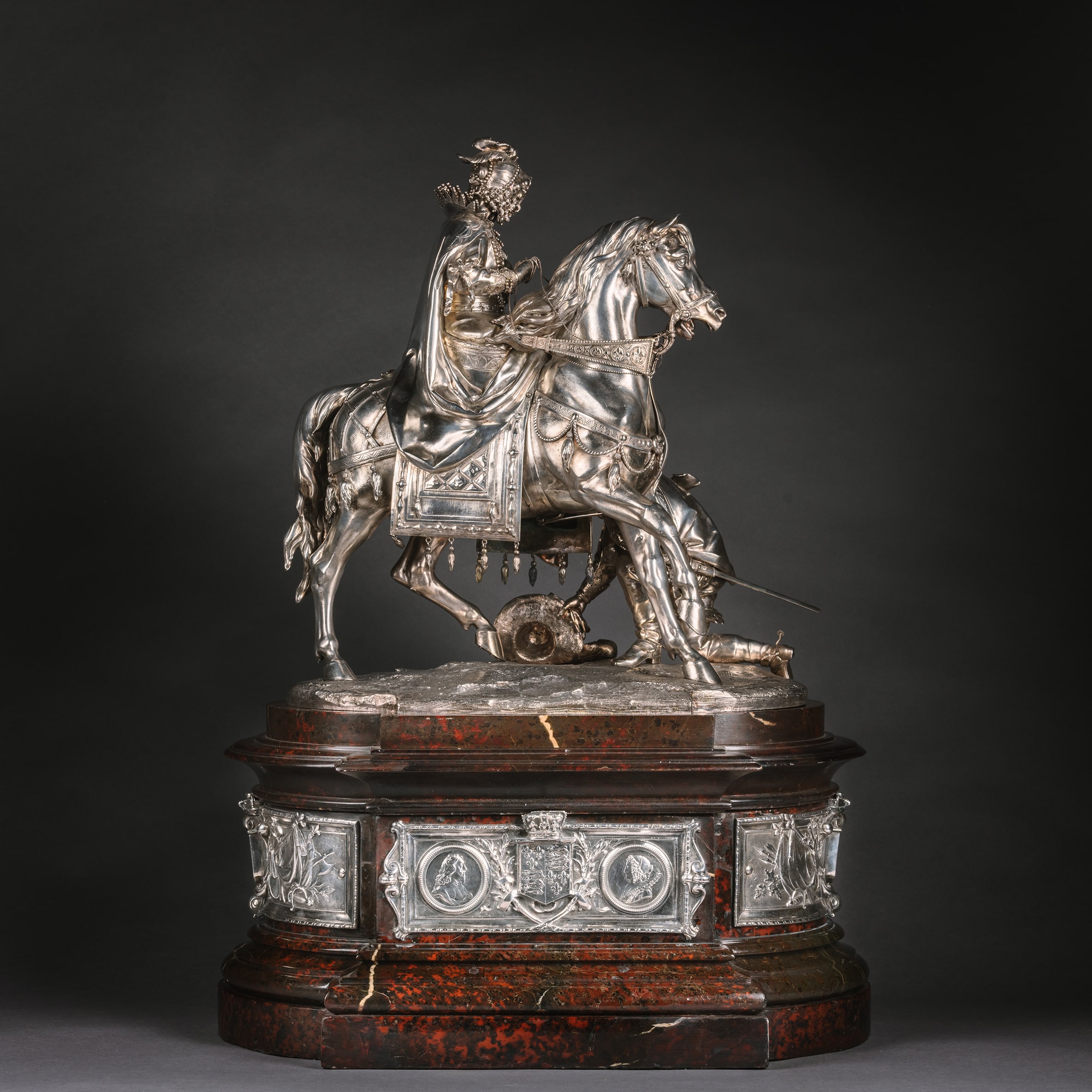
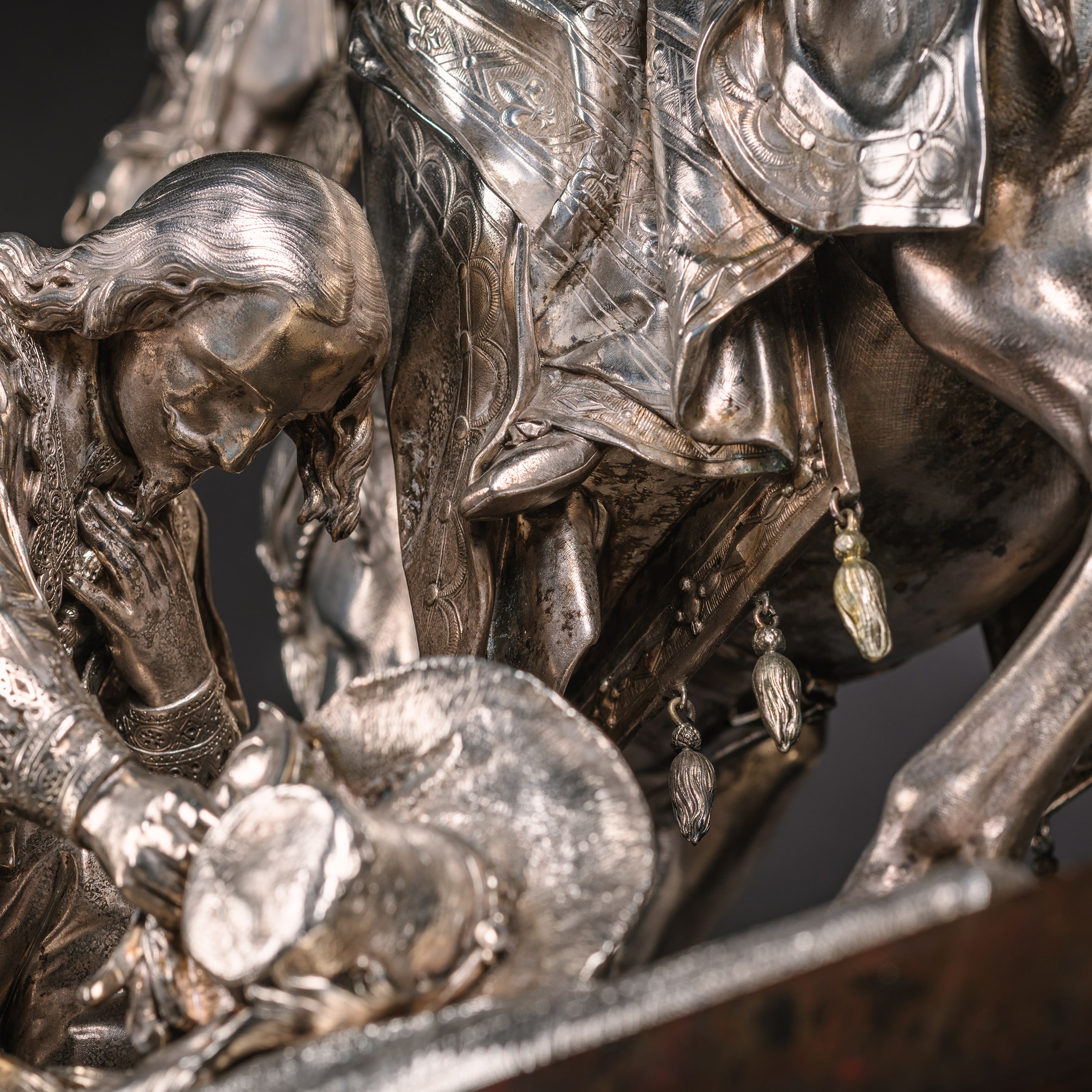
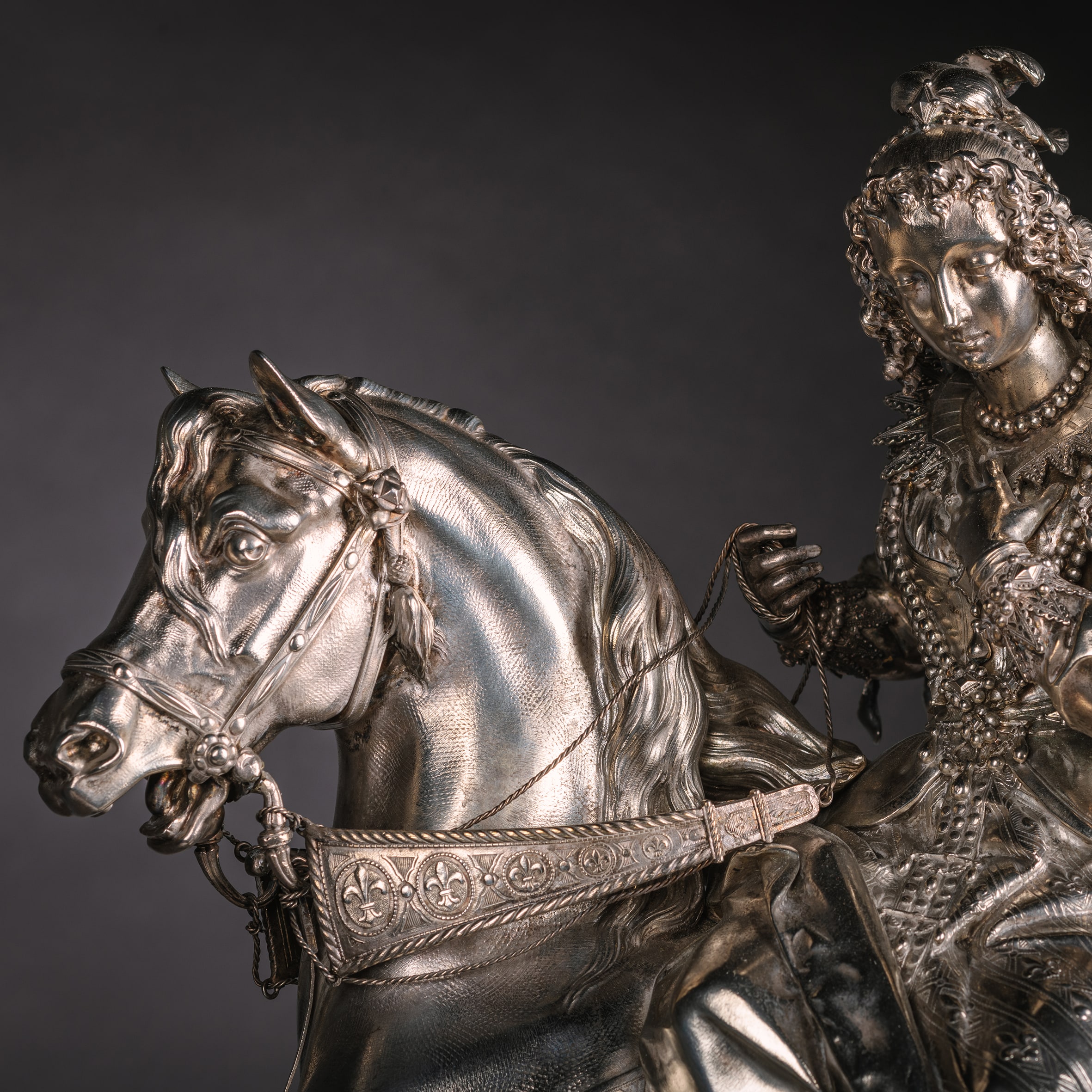
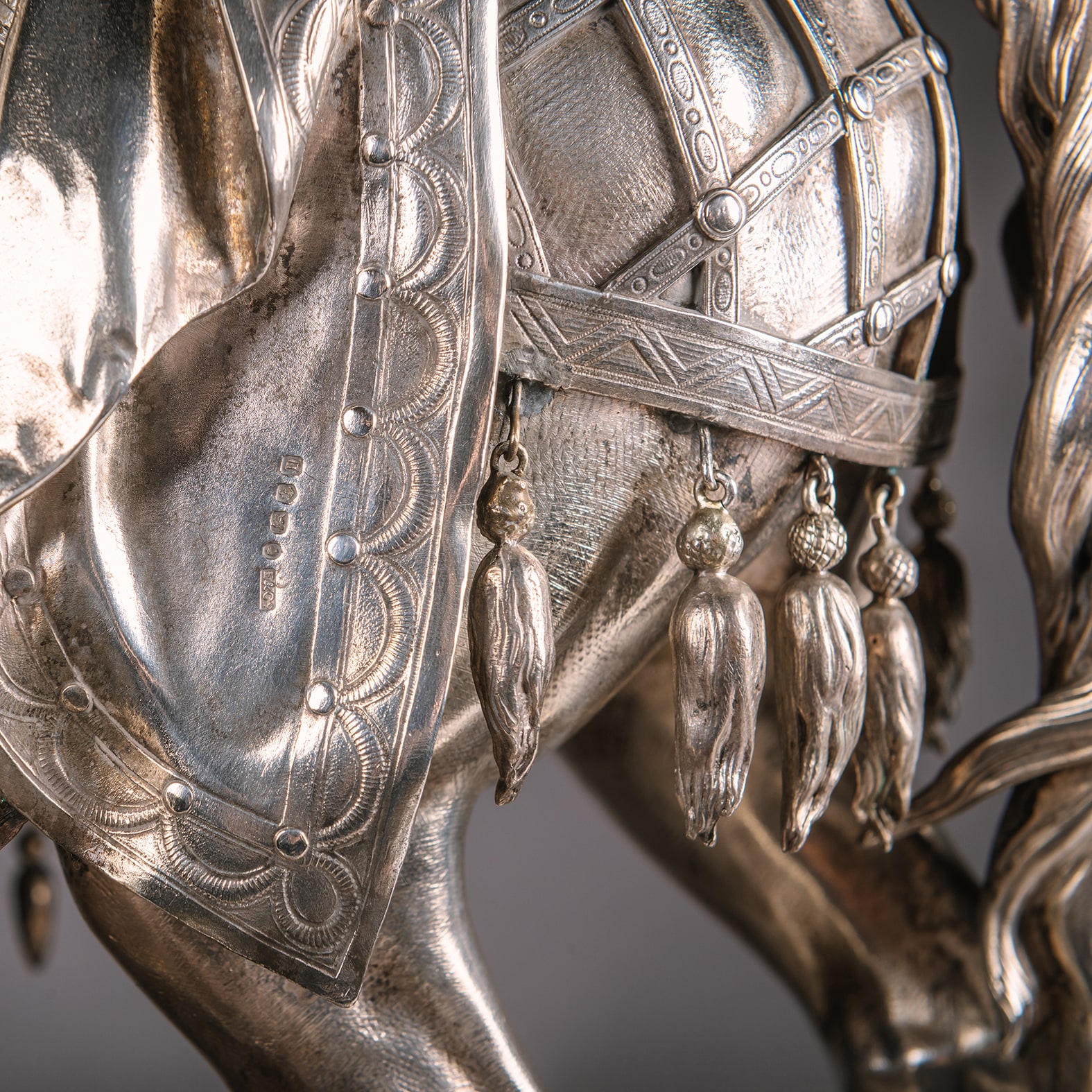
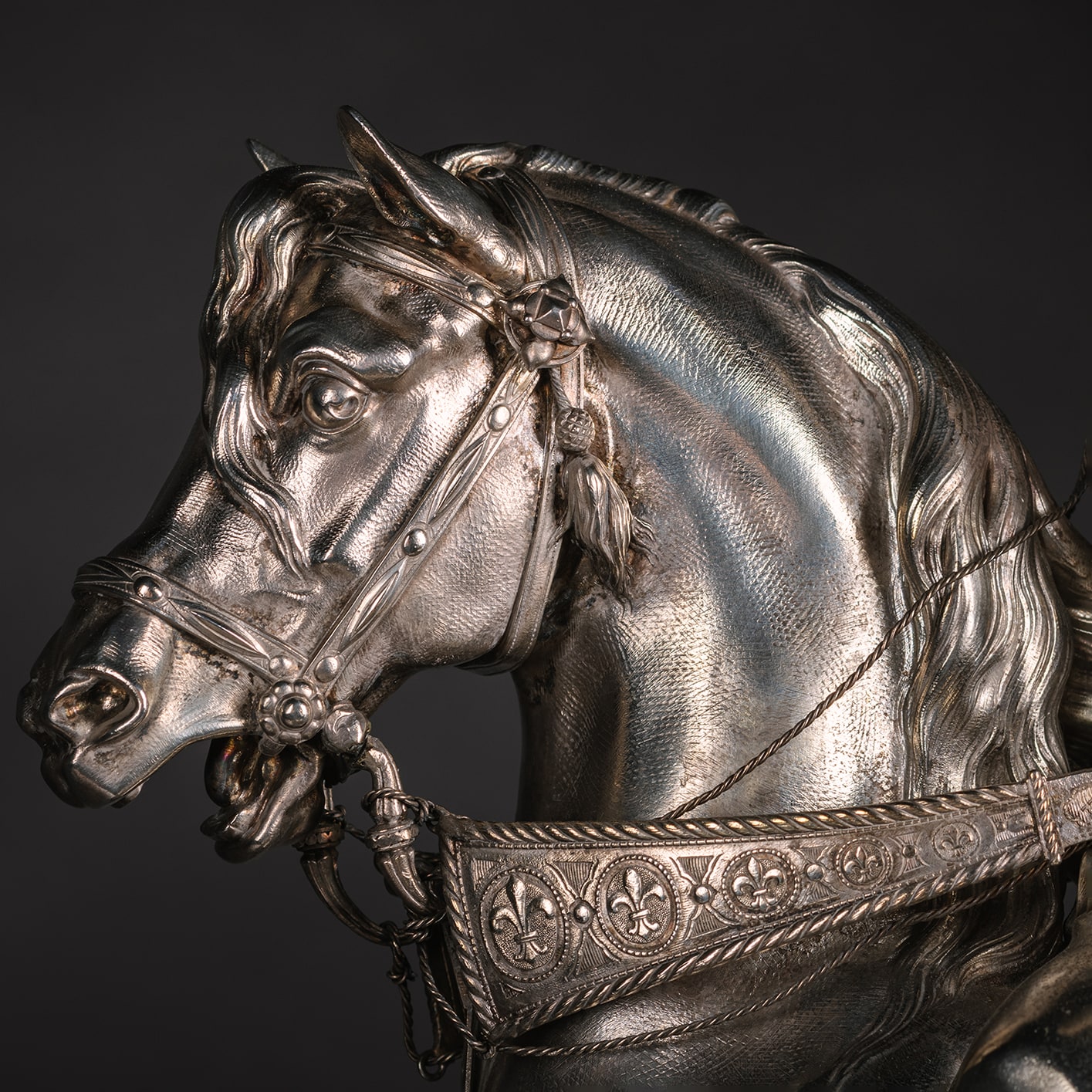
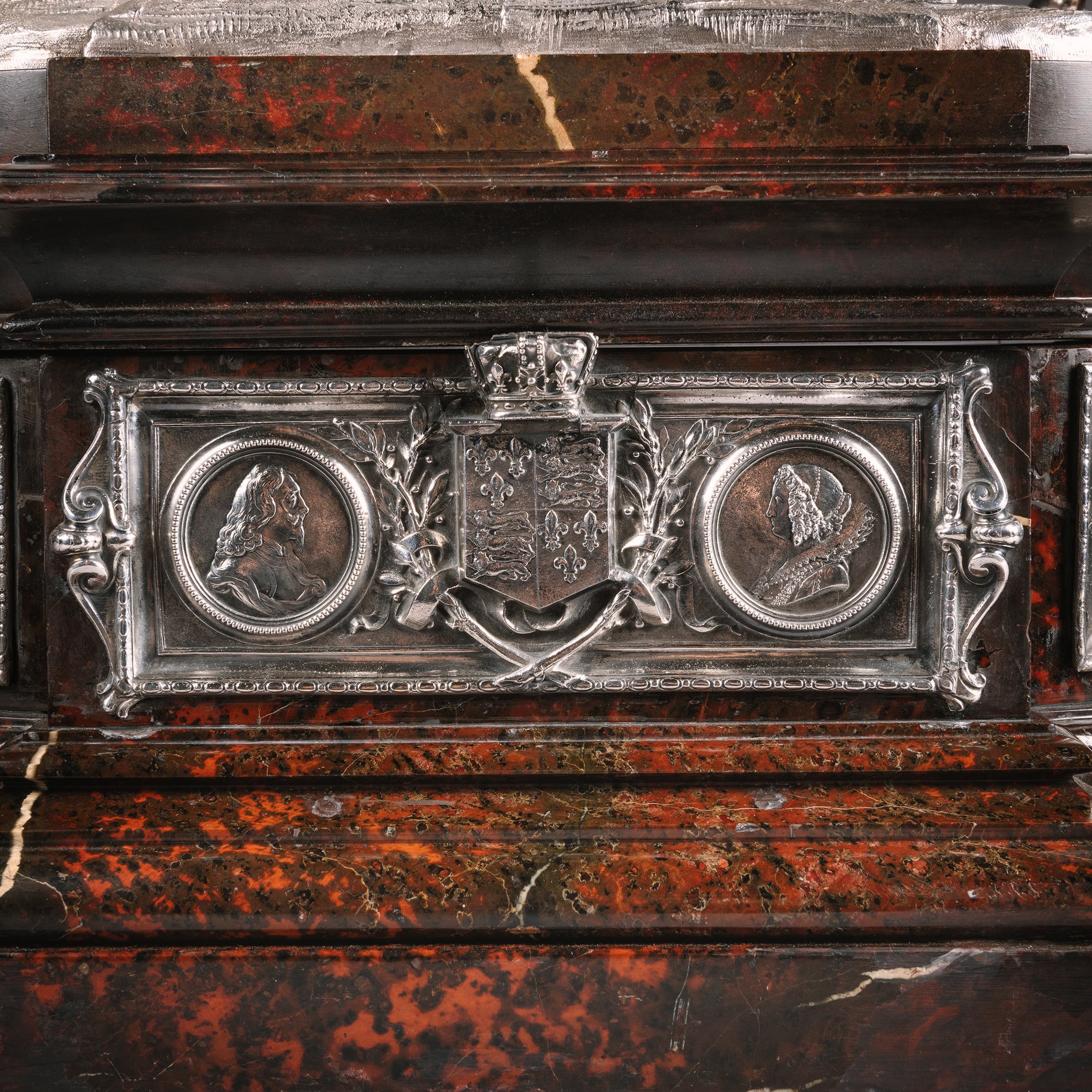
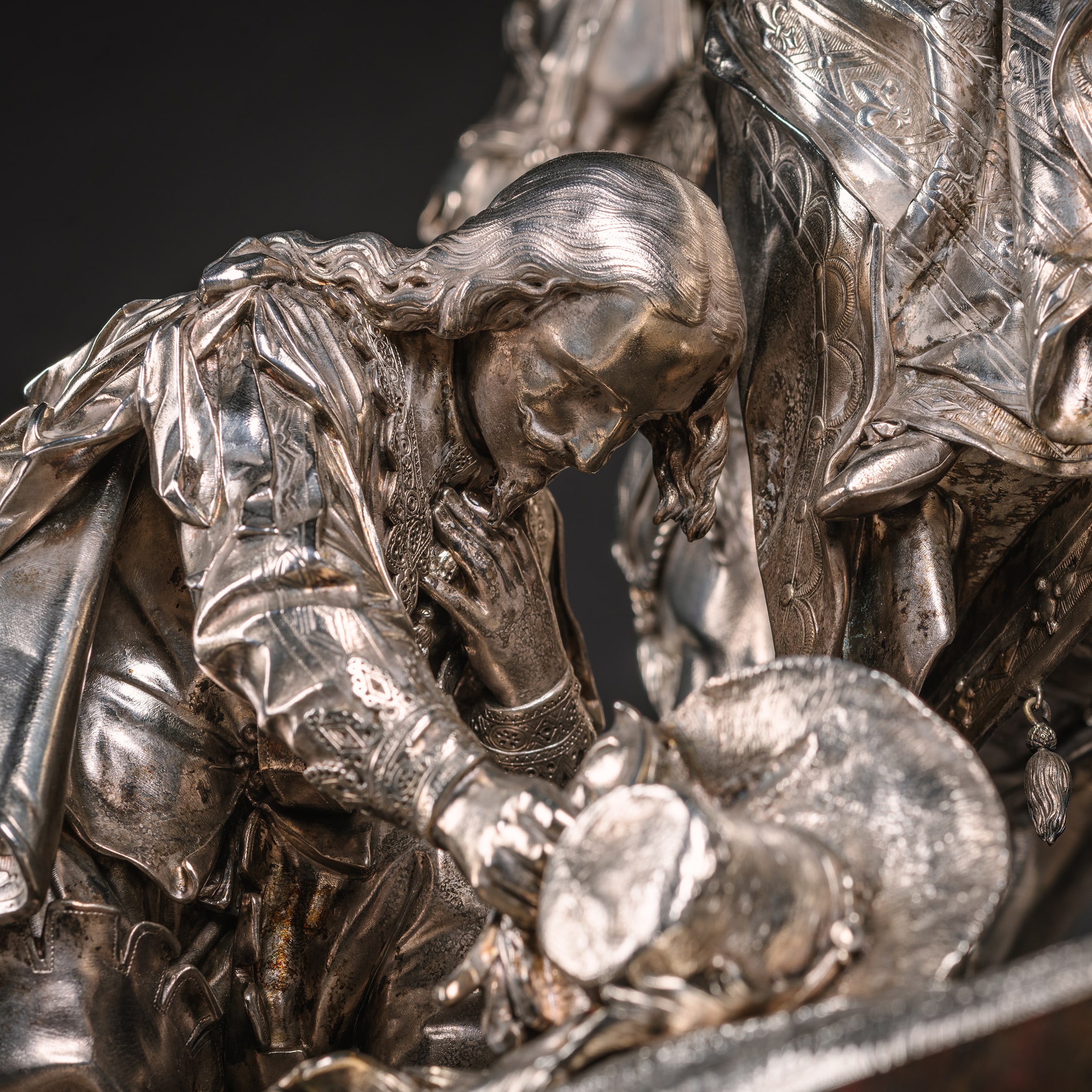
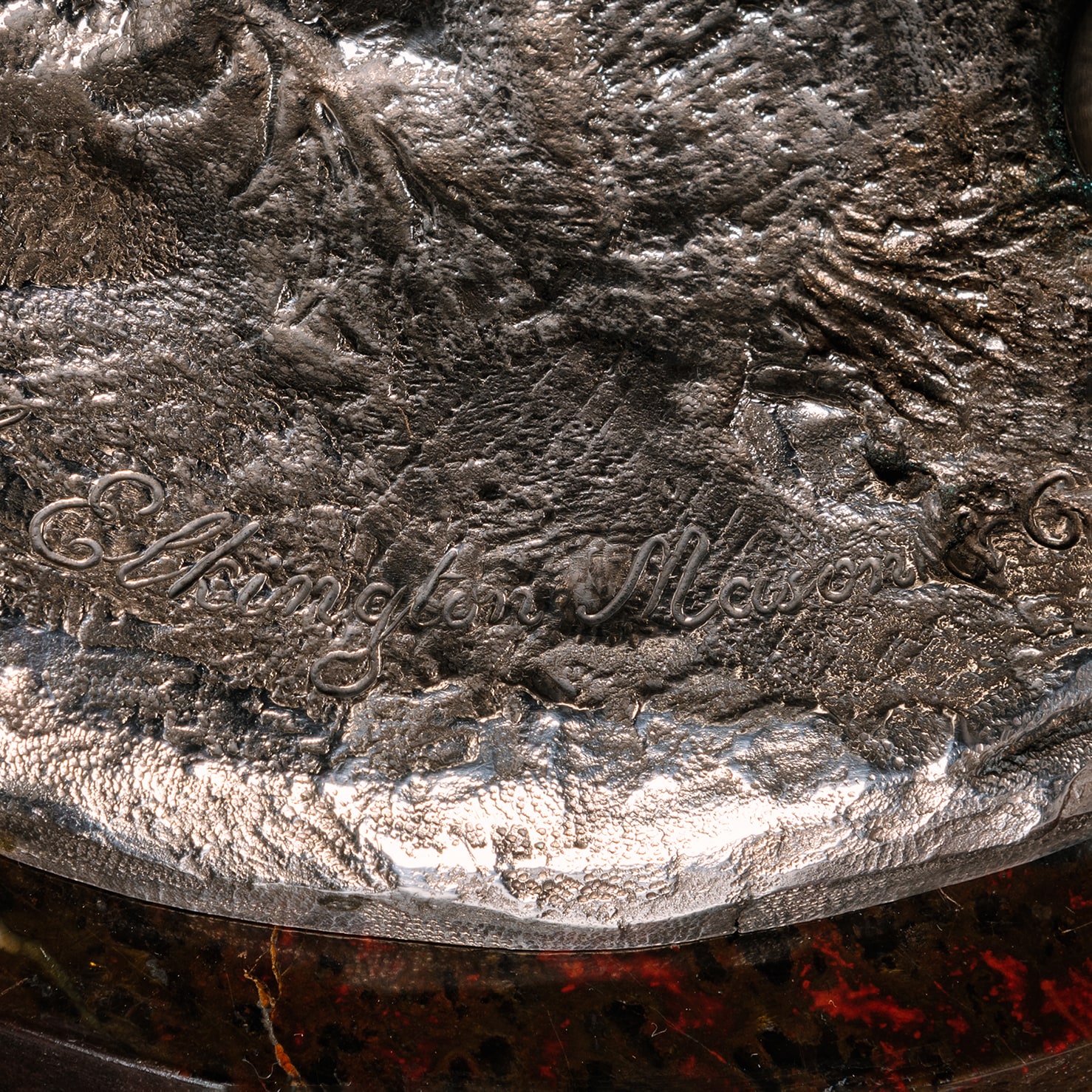

 Печать
Печать